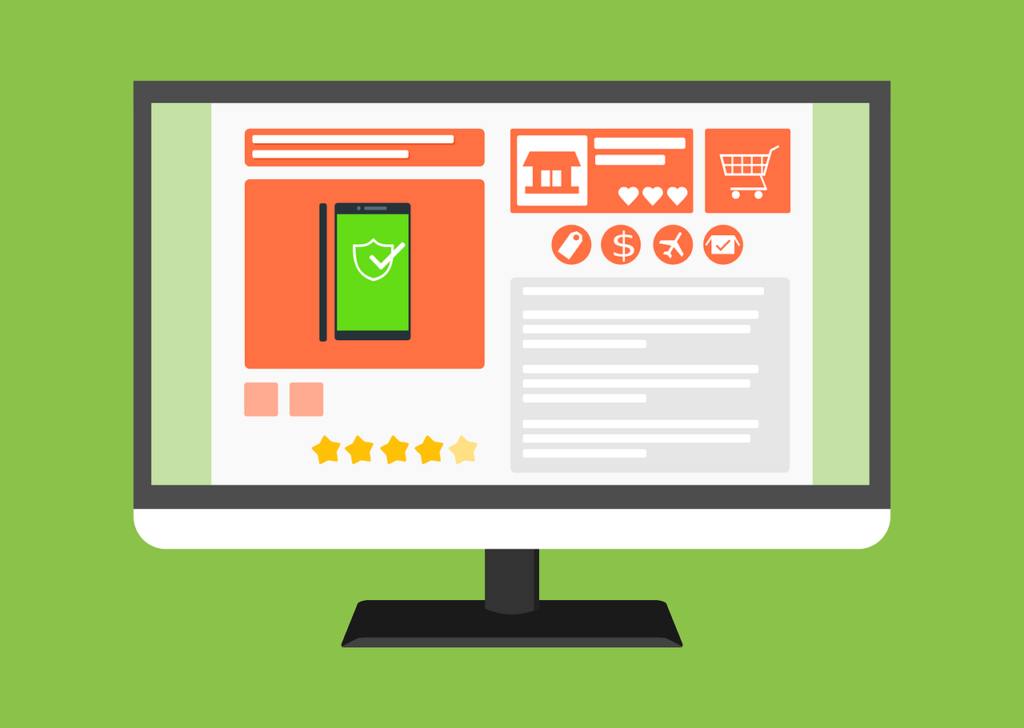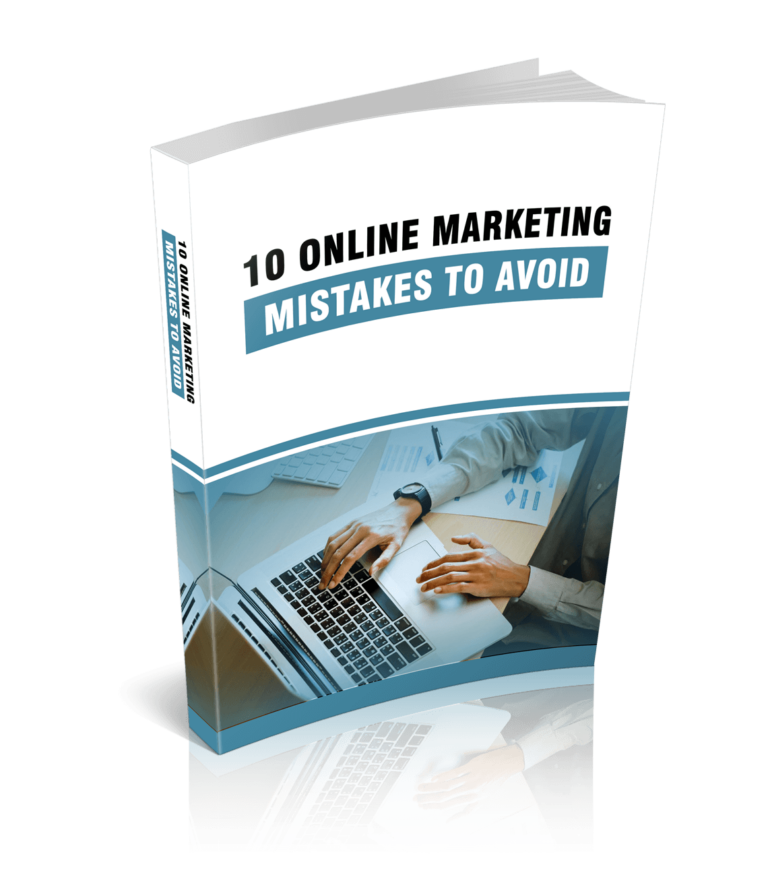An info product is a digital product you create that teaches a specific audience how to do something that you are knowledgeable in. It could be an eBook, video online course, an email course, webinars, scripts, cheat sheets, apps, reference guides, and so on.
You can make a lot of money from your info-product, depending on your level of expertise, time, strategy, and choice of product.
Understand what an info-product is, know what you want to create, have a targeted audience, and master the best ways of marketing it. That is how you will succeed.
If you have been looking for different ways to diversify your income and tap into info products, I will help you to successfully brainstorm for ideas, find your audience, create your first product, market it, and successfully launch it.
SUBSCRIBE TO INCOME PATROL
Get updates on the latest posts and more from Income Patrol straight to your inbox.
BRAINSTORM FOR IDEAS
The key to succeeding in your new venture is choosing the right product that meets your goals as well as one that will allow you to constantly bring value to your customers. Hence, your first step is to come up with an effective way of brainstorming for ideas and executing one that suits you best. Doing so ensures you not only find your niche but use the right marketing channels and add value to your audience.
So, decide what you want to create by doing the following:
- Have a list of what you are good at.
Come up with a two columns list. Name the columns, Skill and Experience. On one side write down everything that you know you are good at or what you enjoy doing the most. This will give you a basic idea of what you can create and offer your audience. On the other side, your level of expertise. This will help you figure out the kind of value you can give to your market. For example, if you are exceptionally great with Languages you can list the languages you are great at in one row and add excellent as your experience level.
After coming up with an exhaustive list, choose the top 3 or 4 that you are great at and move on to the next step.
- Research on the best info-product niches.
Go on Google and search for the common or best info-product niches. A few that are most likely to appear on top of the search results include health and lifestyle, meditation, smart business tactics, wealth building tips, as well as entrepreneurial success ideas.
After running the search, compare your preferred 3 to what’s trending and see if at least one is something that is on-demand. If so, mark it as so. If all three are prevalent, mark them as such and move on to the next stage.
- Look for top-selling online courses.
If your main goal is to make passive income or comfortable monthly earnings, search for top-selling online courses on Udemy. Simply type in your top 3 niches, focus on best-selling instructors, find out how many students or enrollments they have, and view a list of their course material. For example, search for sales and marketing courses. Focus on best-selling ones, pay attention to the reviews and rankings, as well as the course description and layout. If 1 of 3 niches appear on the best-selling or high-rated lists, you’ve found your product idea.
- Pick one that offers real value to your audience.
If all 3 appear on the list, select the one you prefer and one that offers real value to your audience. You don’t want to provide something that you will grow tired of in the long run or information that isn’t as valuable as what the competition is offering. So, select a topic that you are comfortable with, enjoy researching on, and one that will help you to grow your audience fast.
After choosing the perfect idea and knowing that your product is on-demand, reach out to a specific audience.
FIND YOUR AUDIENCE
You already know that your preferred area is something that sells and has high traffic. So, you don’t have to worry about creating a product that no one is interested in. All you need to do now is to find the right audience. Know the type of people you want to influence and cater to their needs.
Identify and grow your target audience.
● Specify who your audience is.
Be specific about who you want to attract. This is the key to identifying your audience and providing valuable information that will help you to retain them. So, who is your audience? If you intend to help business owners build and grow their companies, specify the kind of businesses you want to assist. Will you focus on startups, industry giants, college students, or women in business? Once you have answered that, what kind of information do you want to help with? Is it helping students to build a company from scratch or assisting women to make their mark in a male-dominated industry?
When you have a clear picture, look into basic but equally-important information such as location, estimated income, as well as their preferred online platform. If you know where your audience is located, you will understand them better, easily detect their pain points, and recognize what they are willing to spend their money on. However, keep in mind that you don’t have to limit yourself to a certain geographical location. You can also choose multiple locations and provide for one audience with the same needs but in different areas.
● Discover their pain points.
Aim to provide solutions to problems that are common to the people you are targeting. Discover their pain points and provide valuable information that will take them step-by-step towards the right solution.
Know their day-to-day problems or current pressing needs and meet them. There are many ways to achieve that and if you use the right methods, you will quickly discover their challenges and begin working on your info-product.
● Use survey questions.
Run surveys to identify common issues. Send out emails, ask for feedback on the comments section of your blog, or run a Facebook campaign. That is the most effective way of quickly getting responses and determining the right solution.
Make sure you focus on asking the most important and relevant questions on your email survey. Don’t chase your users or potential buyers away by asking unrelated time-consuming questions.
If your info-product focuses on helping recent college graduates to create an income source and be independent, stick to questions that are in line with that. For example, do you have any prior freelancing experience? Are you interested in having one income stream or multiple ones? What is the main challenge you have with meeting that goal? and What kind of information do you think will help you to start?
That is how you come up with the right strategy for your new product. It is now easy to begin the design process because you know your audience, their pressing needs, their goals, the content they want, as well as the challenges they are having. Help them to meet those challenges, and reach their goals by compiling the information received, hunting for the right solution, and offering it to them.
And then move on to the most interesting part.
CREATE YOUR PRODUCT
This is the best part of developing an info-product. You get to execute your idea, put your knowledge to practice, and do what you do best.
I’m sure you’ve been looking forward to this part. So, let’s go!
Choose the right format.
As mentioned earlier, your info-product can be in the form of an eBook, a webinar, a podcast, a video course, and so on. It all depends on how you want to create and present it to your audience. The most important thing to keep in mind when deciding on which format to use is your audience. Figure out what your audience prefers best. Is it reading an eBook, learning through videos, or listening to a podcast?
For instance, if you are targeting bloggers, they might prefer reading eBooks. If you are focusing on designers, videos would be the best option. Find out what your audience interacts with the most. Is it YouTube videos, Twitter, blogs, online courses, or audiobooks? You can use surveys as well to figure that out or post questions on your social accounts. Once you have a clear picture of what your audience prefers, begin the creation process.
Remember to also consider what you are most comfortable with. If you enjoy writing, use eBooks. If you prefer using your voice and interacting with your audience in front of the camera, use podcasts or videos. Note that you can also use different formats for one product. For instance, if you want to create an online course that teaches people how to build a website for their business, you can also write an eBook that covers important resources that you don’t mention in your videos. Such as the top 3 websites to find free web design resources such as fonts, images, and scripts. You can either sell the eBook or give it away for free as a way of promoting your course.
Create a good outline.
A great outline will guide you through the process and speed things up.
This is what it should include:
● A problem definition.
For instance, full-time students are failing to reach their financial goals. Be as specific as you possibly can and provide the right solutions.
● Detailed steps to the final solution.
Take them step-by-step toward the final solution. Provide practical advice. Select two or three freelancing ideas, mention the benefits of each, the skill level required, and then walk them through the creation, marketing, as well as launch processes. Record 15 or 30-minute videos. Divide your course into short, interactive, and informative sections. Decide on the overall number of videos you want to record. Turn them into a course and sell it on Udemy or other platforms. That is roughly what your info-product should contain.
● Potential revenue.
Find out how much your competitors are selling for. Set your price, set a target, and decide how much you want to make.
Your profits will depend on your format choice, marketing channels, as well as the value you provide. For example, is your product a one-off thing that provides passive income, like an eBook? Or is it something you have to constantly keep updating like tech videos?
eBooks normally cost $10 or more. Online courses range from $50 to hundreds of dollars. However, you can sell it for $15 or less on Udemy and still make great profits. Depending on the ratings and number of students you have.
● A specific time-frame.
Set a deadline for your product. This will help you to work effectively and within a specific time frame. So, will you be done in a couple of weeks or months? Take a few things into consideration when picking a deadline. For example, do you need to improve your skills? Are you learning a new software interface or using one that you are familiar with?
● Skills required.
Will you be using Microsoft Word or Powerpoint to produce your eBook? Or you have to learn a new skill.
Do you need to work 5 hours a day to master the video formatting or design process or you can hire a designer on Fiverr?
After creating your product, concentrate on the next step.
MARKET AND LAUNCH IT
Congratulations on completing your first ever info-product. It’s now time to show it off to the world and use the right marketing tactics to reach your goals.
So, how do you do that?
Here’s how,
● Run a promotion.
Promote your upcoming product on all major platforms that your target audience uses. Briefly explain what it is, how long they’ll have to wait for the final launch, what they will benefit from it, as well as why they are the perfect fit for it. Make sure to include all that on your daily or weekly promotions.
Talk about the problem that your product is going to solve and mention that you are going to help them to arrive at the right solution one step after another. Mention how long it’s going to take, the level of difficulty, and the cost.
● Set a fixed amount.
Be honest about the amount of money you are charging. Most creators make the mistake of falsely advertising less than what the actual product costs. Don’t say you are charging $15 for everything only for your customer to discover there are hidden fees in the long run. That is how trust gets broken.
● Offer a free trial.
Attract more people by offering a trial version of your product. Your potential client can have access to the free version of the final product and decide whether or not to upgrade to the premium one. For example, if you create a how-to-guide that is a compilation of 3 on-demand skills, the free version can have 1. It should offer practical solutions and include valuable information. If the final product covers the creation process, marketing process, as well as tools to grow your sales, the free version can include at least one of those processes.
Trial versions or free trials give the customer practical experience and are a brilliant way of speeding up purchasing decisions.
● Include giveaways.
Talk about the free major giveaway that comes with your final product. Add at least one freebie to it to build interest. For instance, offer free web hosting for a year to students who purchase your web design course. This puts you a step ahead of the competition because you are offering something that your students need and may have challenges accessing due to a lack of funds. Your free offer is valuable and it is something that your competitors aren’t offering. Therefore, you are guaranteed to remain at the forefront.
You can also use Marketing Automation Software to speed up the process. For example, ActiveCampaign or Mailchimp. Marketing software helps you to market and sell to the right audience by analyzing user behavior. This will help you to advertise to the right people, quickly grow your audience, and up your sales.
● Launch your product.
After running a successful marketing campaign and receiving positive feedback about the trial version, go ahead and launch the final product. Pick the right platform. Find out if it suits your needs and meets your goals.
Key things to consider when choosing the best platform to sell on are:
– Your location.
Does your current location appear on the list of countries that are allowed to advertise and sell on the platform?
– Method of payment.
Will you be able to receive payments via the platform? Does your country allow for that?
– Transaction fees.
What percentage goes to the platform and is it ideal?
● Get your first paycheck.
Now for the moment, you’ve been waiting for; your first paycheck!
After investing so much time into the creation and marketing process, it’s now time for numbers. Upload your work to the right platform and start selling.
You can either use existing platforms with high-traffic or eCommerce ones. High-traffic sites like Amazon, Walmart, Skillshare, Udemy, and eBay can help you to grow your audience fast and increase your revenue. This is because they already have millions of people visiting, browsing, and buying on their platform. People who trust and are happy with their services. Plus, you will be advertising to people who already have an interest in your particular niche.
You can make a lot of money if you market yourself right, follow community guidelines, and understand how the platform works. So, be careful of your choice.
BUILD AN ECOMMERCE SITE
Another option is to build an eCommerce site if you don’t want to abide by the guidelines or if you want complete control over your work, money, etc. This can be a slow route especially if you are only starting. You have to consider the design process, cost of the website, SEO, and security. However, it is not something that can keep you up at night. The information is already available online. You just have to find it.
Use a free WordPress plugin called WooCommerce to build your site and sell your product directly from it. You don’t have to worry too much about security because the platform is popular for its advanced security and constantly rolls out important updates.
Your clients can pay through credit cards, debit cards, or bank transfer. You receive payments via PayPal and Stripe. You can upload as many products as you like, over 50 000. If you set things up correctly.
WooCommerce comes with extra costs, such as hosting fees, domain name fees, and other additional costs like developer fees or extensions.
Build a Shopify store.
If you are on a budget, you can build a Shopify store instead. It is quite affordable, secure, easy to set up, requires no tech skills, has inbuilt marketing tools, and a great support system. It also comes with a 14-day free trial.
Upgrade to a paid plan when you are satisfied with the service. Choose the right pricing plan that suits your needs. Their plans range from as little as $29 per month to $300 per month.
Optimize your site for SEO.
Grow traffic to your store by implementing the best SEO practices. Link your store to all social media platforms. Run YouTube and Facebook campaigns.
Open a Facebook group that is solely dedicated to promoting your product. Keep members engaged by offering freebies and giving away prices.
Ask for testimonials.
Add testimonials on your site, blog, and other social media platforms to build trust and prove your credibility. Satisfied customers will be more than happy to write down a few words about their experience with your product.
Good luck getting your first info-product to the world and monetizing it!
LIMITED-TIME OFFER!
With LIFETIME ACCESS membership ($67) you have access to ALL exclusive materials (current and upcoming) for lifetime. We create new courses, ebooks, webinars and downloads on a regular basis. This offer expires soon and will be replaced with monthly-paid subscription, so hurry up! Get access HERE!





